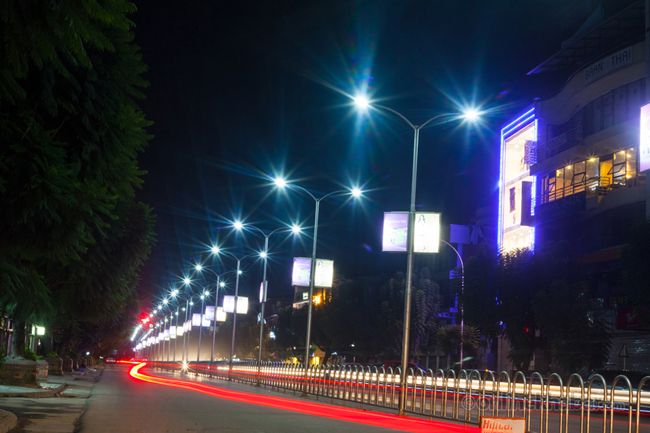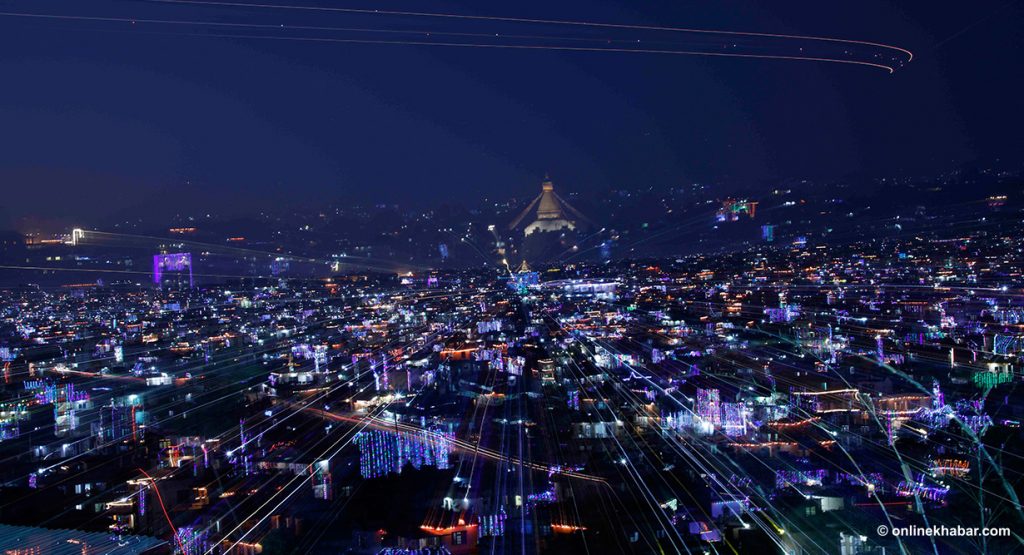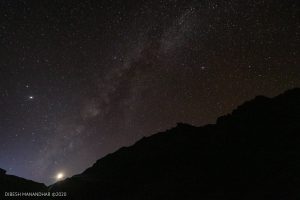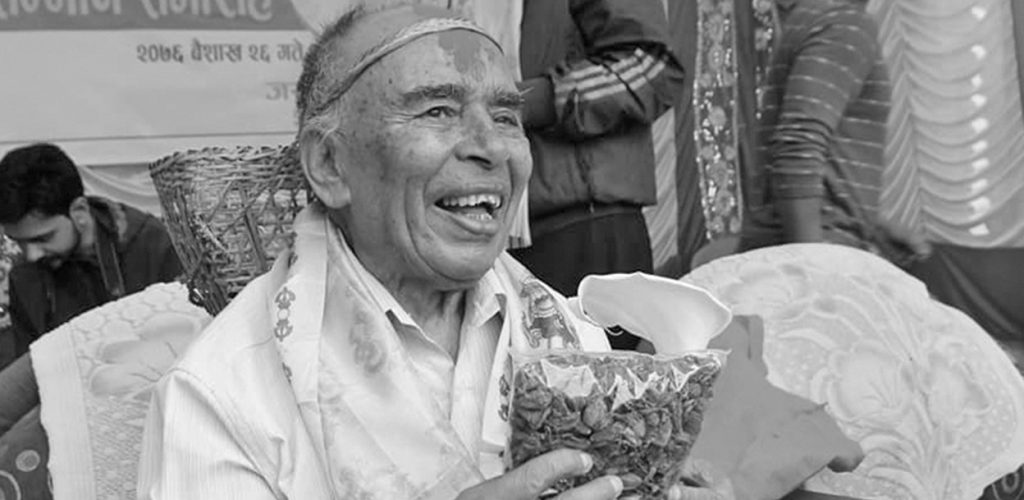Whereas people enjoy Tihar as the festival of lights, by illuminating their houses and localities in such a way that is never seen other times, Manisha Sharma, a resident of Pokhara, has a peculiar problem about excessive and unplanned use of lights. As a person whose eyes are very sensitive to light and dust, she always has too much trouble with excessive lighting.
A few months ago, there was construction work going on near her home. They had installed extremely bright lights there for security reasons. “As the light was nearby my room, it obviously entered my place, and I couldn’t sleep that whole night. The light was so bright that it hurt my eyes. It caused a headache”
Sharma assumes that as light pollution does not show any direct effects on many people, most Nepalis are unaware of it. With the festival of lights, Tihar, approaching, and with very few people conscious of the light pollution and its consequences, experts suggest this is a good time to make yourself aware of light pollution.
Negligible awareness
Somy Bhattarai, a student of environmental science, says light pollution is a sensitive issue, and people should know this.
“When I was a child, I remember gazing at skies where nights looked bright and beautiful full of stars and I chased those fireflies which looked amazing hovering around the ground,” she questions, “Why don’t the skies look like before? Where are the fireflies now?” Then, she answers that these changes are the result of light pollution.
The Light Pollution Science and Technology Institute in Italy has reportedly said 80 per cent of the landmass of the earth suffers from light pollution.
But, the situation here in Nepal is such that until a neighbour installs a floodlight in his house and projects outside disturbing another neighbour, it will not be realised as pollution, informs Diwakar Bista, an assistant professor at the Department of Electrical and Electronics Engineering, Kathmandu University, also an expert in the field of illumination engineering.
He adds, “People have felt the disturbance caused by light pollution. However, they are yet to realise the discomfort they are suffering from is light pollution, due to a lack of awareness.”
Bista explains when light installed is projected in excessive amount or misdirected in some other area or direction than the targeted area or if the light is confined to a certain object or area trespasses, it is called light pollution. In other words, when light, instead of facilitating, affects the natural appearance of any object or thing, this is light pollution.
There is nothing in the world that light pollution does not affect. According to Bista, light pollution not only disturbs the circadian rhythm of humans but also affects the ecosystem, hence impacting the behaviour and survival of numerous species and disrupting nocturnal activities.
Besides, excessive light pollution also washes out starlight in the night sky and contributes to energy wastage, he adds.
Tihar lights vs pollutants
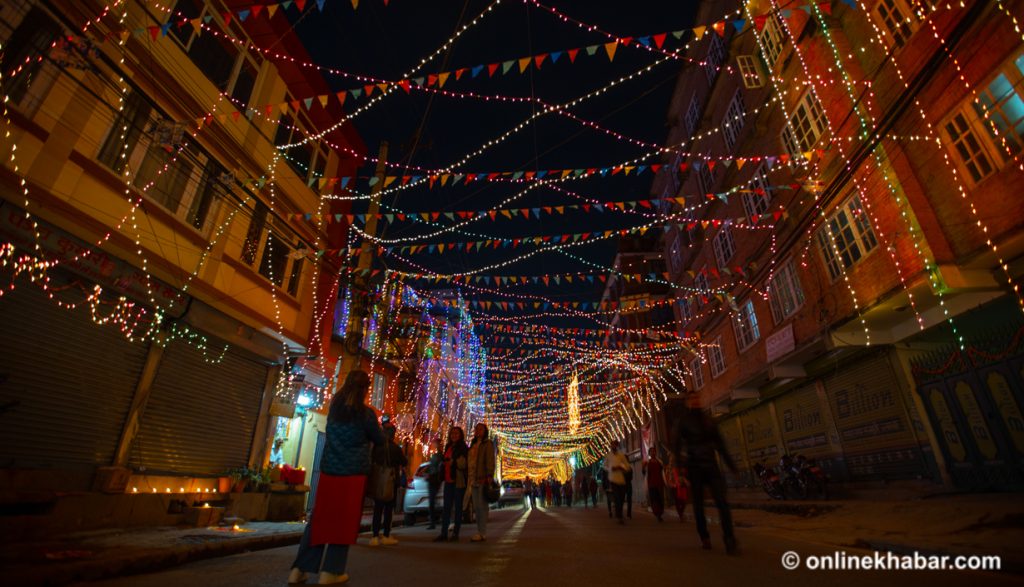
However, the issue of light pollution is very subjective. It depends on several factors such as its permissibility given the time and location. For example, festival lighting as during Tihar is not counted as pollution, says Bista.
He describes, “No doubt, it does affect but unlike other pollution sources, its effect remains for a short term until the light is turned off. Regarding Tihar, lights are used for a few days only.”
Also, as a human, it generally affects the brain. However, Tihar lights are seen as pleasing by most people, so it does not create discomfort, hence is not considered light pollution, he says.
Sharma also shares similar views, “I think the lights used as decorations in Tihar are not that bright. Also, I usually don’t get outside my home, probably that’s why the Tihar lights have not discomforted me.”
Meanwhile, Bista comments the key culprit about light pollution is decorative lighting.
Need to control
What is more problematic than festive lighting, according to him, is the similar kind of lighting used all around the year, which is a must to control.
There is no standard of lighting in Nepal, and it has aggravated the problem. Also, neither there is a practice of consulting lighting engineers before installing lights in houses in Nepal, nor is there any discussion about light pollution in society.
The problem of light pollution is not limited to urban areas. The only difference is the intensity of pollution in cities and villages.
“Wherever there is the application of electrical lighting systems, if that light is not installed in a well-planned or well-oriented or well-directed way, it will contribute to light pollution,” Bista says, “But, in the cities, there is the excessive use of commercial lights, hence, it appears there is more pollution in the urban areas.”
Like Bista, Bhattarai and Sharma also feel the need to address this problem as soon as possible.
In order to control this, the government should make an arrangement that a system of drafting electrical and light arrangement layout of any structure is followed while constructing a building. The government also needs to monitor the quality of light sources imported, recommends Bista.
“There should be a guideline relating to the light use,” he says, “They should at least follow some global standard even if they can’t make their own and follow.”



